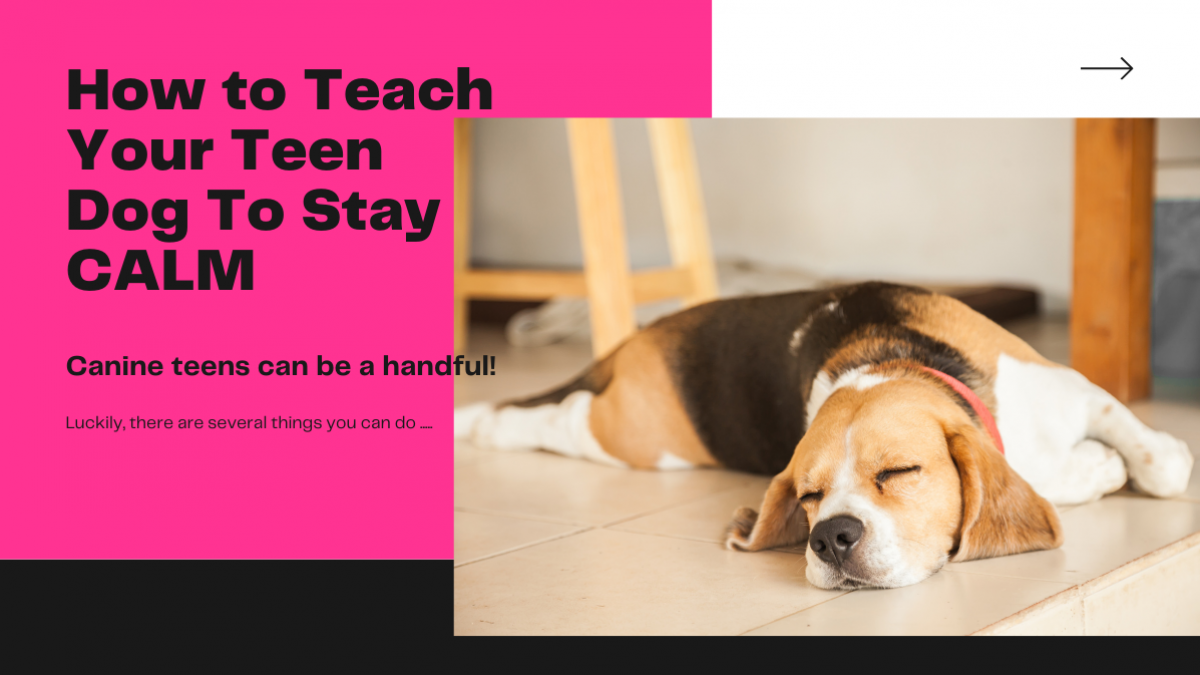How To Teach Your Teen Dog Calm

Just like human teenagers, canine teens can be a handful! Luckily, there are several things you can do to help your furry teenage learn how to do calm
How to teach your teen dog calm
Dogs are remarkable creatures. They have the ability to adapt and change their behaviour based on their environment and the people around them. Just like humans, dogs go through different stages of development as they age. And just like human teenagers, canine teens can be a handful! Luckily, there are several things you can do to help your furry teenager learn how to stay calm and relaxed. Here are some tips for teaching your teen dog to stay calm.
Start with basic obedience cues such as sit, stay, come, and down
Training your dog in basic obedience is an essential part of pet ownership. Through regular practice and reinforcement, these cues can help build trust between you and your dog, as well as keeping them safe with callbacks and recalls when needed. Starting with the basics such as 'sit', 'stay', 'come' and 'down' will lay the foundation for further training. Ensuring a positive experience through rewards and praise allows your pup to learn more easily, recognising that desired behaviour leads to positive outcomes. Avoiding negative corrections can keep training enjoyable while still providing boundaries and consistency. With patience, you'll soon be on the path toward having an obedient canine companion.
Be consistent with your cues and rewards
One of the most important elements for success when training a pet is to remain consistent with cues and rewards. Consistency should be established from the start, so the pet learns which actions to do and when they should receive rewards. It’s best to use positive reinforcement methods such as offering a treat or verbal praises to ensure that the pet is encouraged for doing good behaviour. It's also important not to react when your pet does something wrong, since this might send them mixed signals. If you stay consistent with commands and rewards during the constancy process, your pet will eventually learn what you expect of them, making training much more enjoyable!
Avoid using punishment when training your dog - instead, focus on positive reinforcement
Training your dog can be a difficult challenge that requires patience, understanding and much love. Rather than relying on punishing your pup for any unwanted behaviour, employ positive reinforcement techniques to get the best out of them. Positive reinforcement is a way of teaching that rewards desired behaviour as opposed to punishing unfavourable actions. When positive reinforcement is used effectively, a strong bond between canine and owner can be formed, increasing trust and bettering their relationship. This method also allows the dog to learn faster with fewer mistakes, as this type of training focuses on results rather than punishment. So practice reinforcing behaviours you want your pup to repeat and use lots of praise for the desired action - this is surefire way to successfully train your dog!
Teach your dog to "speak" or "quiet" on cue to help stop excessive barking
Training your pet can be a fun and rewarding experience, and teaching your dog to speak on command is no different. By rewarding your pup with treats, or simply verbal praise and acknowledgement, they quickly learn how to respond appropriately. To start, when barking becomes excessive, give your dog the "quiet" command in a firm but gentle tone. If done at the right time and coupled with treat-rewards for silenced barking, your dog will soon recognise what behaviour is expected of them. With consistent practice over several weeks (or even months) you will eventually find that you can cut down excessive barking over time as you discover what works best for your furry friend!
Exercise your dog regularly to help burn off excess energy and keep them calm
Exercising your dog regularly is beneficial for their physical and mental well-being. Not only does it help maintain a healthy weight and prevent obesity, but regular exercise can also burn off excess energy that would otherwise cause dogs to become restless or even destructive. Taking your dog out for multiple daily walks or runs can also be a great way to mentally stimulate them, which will help keep them calm and further reduce any behaviour problems such as barking or howling. Exercise is essential in helping maintain the bond between you and your pup, so be sure to prioritise your dog's activity levels to help keep them healthy, happy, and calm.
Give your dog a designated place to sleep or relax in the house
Giving your dog a constant, designated spot to relax or sleep in the house can ensure greater feelings of comfort and security for your pup. Not only does this help form a secure routine and environment, it can also help you keep track of their behaviour and identify any abnormalities early on. Additionally, by having a specific spot that is exclusively for them, it creates a place for them to easily decompress after playtime or socialisation with other pets and humans. Your pet will feel right at home in its own personal space, giving you peace of mind knowing they are comfortable and content while inside the house.
If you're looking to train your dog and improve your relationship with them, start by using some of the basic obedience cues we've outlined. Be consistent with your cues and rewards, and avoid punishment - instead, focus on positive reinforcement. Finally, make sure to exercise your dog regularly to help burn off excess energy and keep them calm. With a little bit of effort, you can have a well-behaved dog that is a joy to be around. Have you tried any of these training tips? Let us know in the comments!
 Anita
Anita 